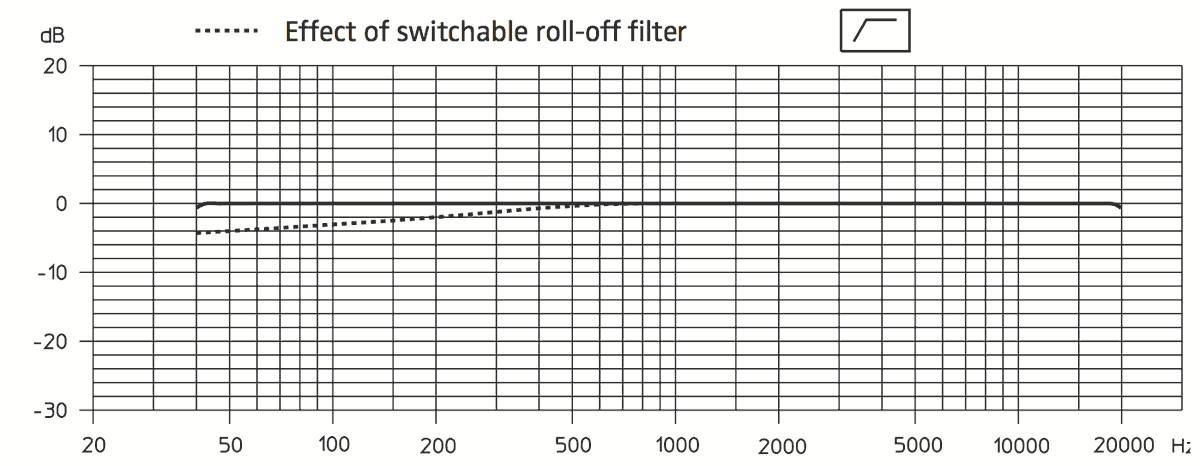 Sennheiser Electronics Corporation MKH 40
Sennheiser Electronics Corporation MKH 40
Cardioid Pencil Condenser Microphone
The MKH 40 is an end-address rf-condenser with a Cardioid polar pattern.
This is a popular mic for field and SFX recording, often used as the “mid” mic in a mid-side coincident stereo configuration, usually with an MKH 30 for the “side” channel.
Nathan Moody aka NoiseJockey - 2010
The MKH40 and MKH30 is the de-facto standard for nature recordists and those who record stereo ambiences.
The published polar graph shows a pure Cardioid pattern, with a deep null at 180°, below 2kHz. Above 4kHz, the pattern narrows slightly, becoming Supercardioid (with nulls at &#plusmn;120°) above 16kHz.
The frequency response graph is ruler-flat from 40Hz to 20kHz. With the optional HPF enabled, frequencies below 500Hz are mildly attenuated, 0-4dB.
The mic uses Sennheiser’s RF Condenser technology, which uses a low polarization voltage and loose diaphragm tension to produce a very low self-noise (12dBA), high-sensitivity (25 mV/Pa) transducer.
Like the other mics in the MKH 20/30/40/50 series, the MKH 40 uses a 20mm capsule with a 15.5mm diaphragm made of 3.5-micron Mylar.
The mic ships with the MZS 40 shockmount, and MZW 41 foam windscreen.
The Sennheiser Electronics Corporation MKH 40 is also known as: MKH40.
Specifications
| Pickup Patterns | Pads & Filters |
|---|---|
|
Cardioid
(25 mV/Pa; 40 - 20,000 Hz) |
|
| Capsule Dimensions | Impedance | SPL/Noise |
|---|---|---|
| Diaphragm diameter: 15.5mm Capsule diameter: 20mm Diaphragm gauge: 3.5 microns |
150 Ohms (Low) | Max SPL: 142 dB Self-noise: 12.0 dB(A) |
| Weight | Length | Max Diameter | Interface(s) |
|---|---|---|---|
| 100g (3.53oz) | 153mm (6.02'') | 25mm (0.98'') |
|
| Power Specifications |
|---|
|
Did we get anything wrong on this page? Please let us know!


